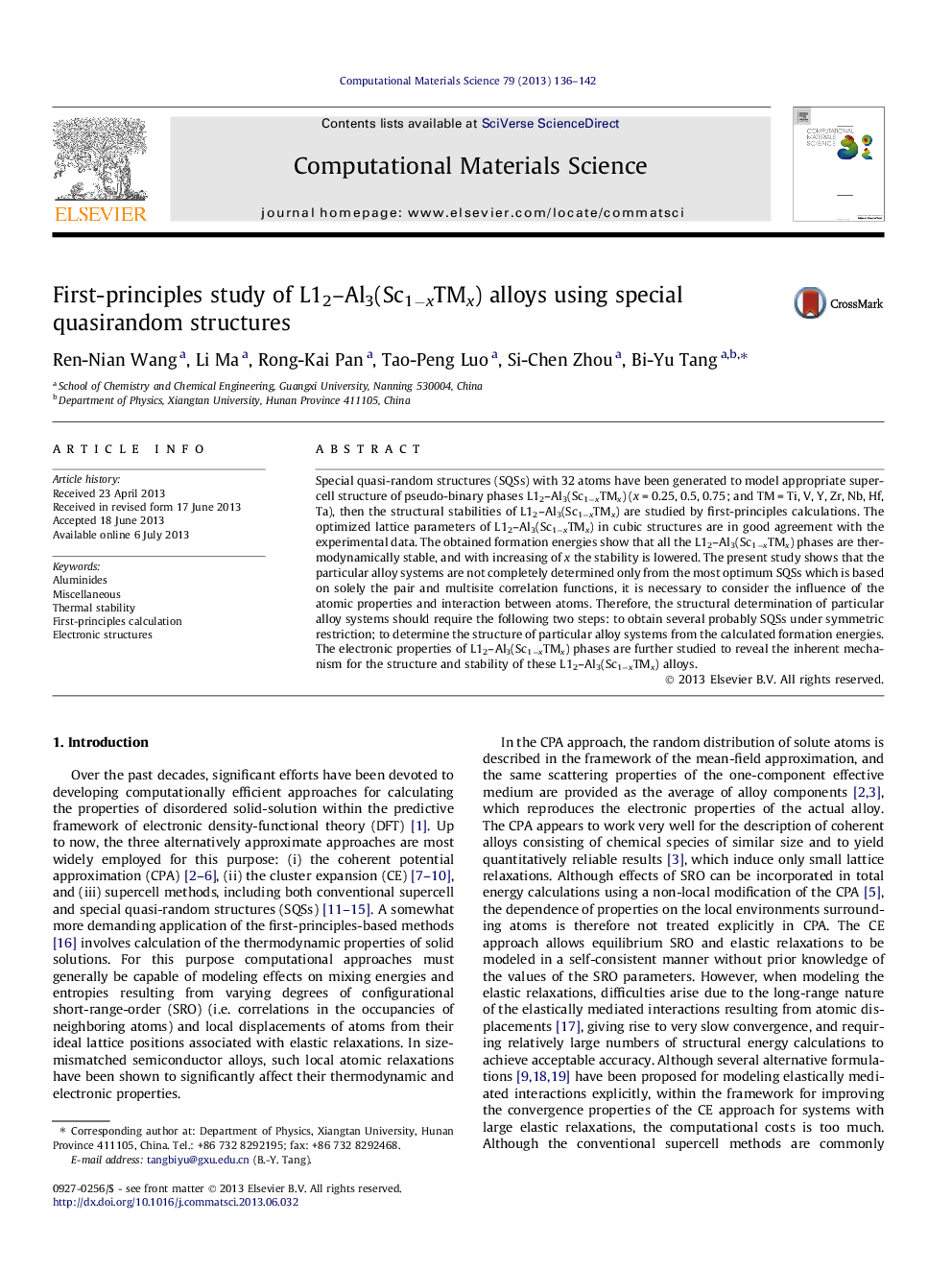| Article ID | Journal | Published Year | Pages | File Type |
|---|---|---|---|---|
| 7961383 | Computational Materials Science | 2013 | 7 Pages |
Abstract
Special quasi-random structures (SQSs) with 32 atoms have been generated to model appropriate supercell structure of pseudo-binary phases L12-Al3(Sc1âxTMx) (x = 0.25, 0.5, 0.75; and TM = Ti, V, Y, Zr, Nb, Hf, Ta), then the structural stabilities of L12-Al3(Sc1âxTMx) are studied by first-principles calculations. The optimized lattice parameters of L12-Al3(Sc1âxTMx) in cubic structures are in good agreement with the experimental data. The obtained formation energies show that all the L12-Al3(Sc1âxTMx) phases are thermodynamically stable, and with increasing of x the stability is lowered. The present study shows that the particular alloy systems are not completely determined only from the most optimum SQSs which is based on solely the pair and multisite correlation functions, it is necessary to consider the influence of the atomic properties and interaction between atoms. Therefore, the structural determination of particular alloy systems should require the following two steps: to obtain several probably SQSs under symmetric restriction; to determine the structure of particular alloy systems from the calculated formation energies. The electronic properties of L12-Al3(Sc1âxTMx) phases are further studied to reveal the inherent mechanism for the structure and stability of these L12-Al3(Sc1âxTMx) alloys.
Related Topics
Physical Sciences and Engineering
Engineering
Computational Mechanics
Authors
Ren-Nian Wang, Li Ma, Rong-Kai Pan, Tao-Peng Luo, Si-Chen Zhou, Bi-Yu Tang,
